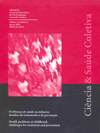0756/2007 - Prevalence of mouth breathing in childrenan elementary school
Prevalência de Respiradores Bucais em crianças de idade escolar
Author:
• Josiane Marques Felcar - Felcar, J.M. - Londrina, PR - Universidade Norte do Paraná - UNOPAR - <josianefelcar@sercomtel.com.br>Thematic Area:
Não CategorizadoAbstract:
Objective: To identify the prevalence of mouth breathing in children from an elementary school.Materials and Methods: 496 questionaries were answered by 1st and 4th grade children’s parents or sponsors, in order to identify mouth-breathing. There were questions about habits, sleeping, behavior, eating, personal care and breathing. Mann-Whitney and the Chi-square tests were used to compare the variables between mouth-breathing and nose-breathing among the groups. To measure the exposure effect of the explanatory variables on mouse breathing, the test of logistic regression was used and its magnitude was calculated through Odds Ratio. The statistical significance was set at 5%.
Results: The rate of returned questionnaires was 84.5%. The prevalence of the mouth-breathing over this population was 56.8%. The average age was 7 years old (6-9). There was no significant statistical difference between genders, considering 49,1% male and 50,9% female. The final model of logistic regression identified the variables dribble, sleeps well (negative association) and snores as factors that predict the occurrence of the mouth-breathing.
Conclusion: The prevalence of mouth-breathing was similar to related in the literature. The variables dribble, sleeps well (negative association) and snores may be factors that predict the occurrence of mouth-breathing.
Key words: mouth-breathing; prevalence; child; pediatrics.











